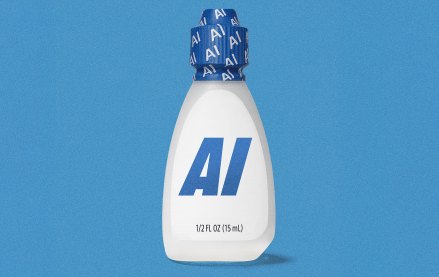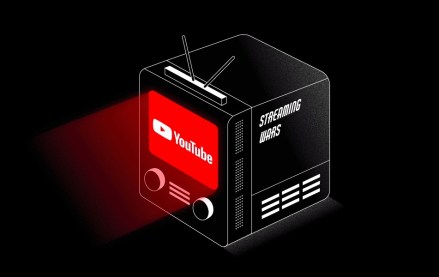In the pitch for brand dollars, retail media networks turn to creators

In the midst of the retail media network boom over the past two years, retailers including Walmart, Amazon and Target, have increasingly started trying to monetize their creator networks and affiliate programs, according to six agency retail media executives Digiday spoke with for this piece. RMN execs see those monetization efforts as a play to take in more ad revenue, especially the brand marketing dollars retailers have spent the last year vying for.
These tactics are formalizing their respective influencer programs as the demand for influencer marketing grows — even as RMNs still face challenges in incremental measurement. Notably, influencer marketing has become a vital part of the media mix with marketing spend in the U.S. influencer marketing ecosystem expected to reach $9.29 billion this year, per eMarketer.
“The impact creators and influencers are having on marketing strategies can’t be ignored, and retail media networks are well aware of the potential,” David MacDonald, evp and head of retail and commerce experience at marketing agency Razorfish, said in an emailed statement to Digiday.
Last October, a study from LTK and Northwestern University found that 82% of retail media networks were using creators to boost awareness, access customer data as well as leverage offline sales, online sales and sales conversions.
“We’re seeing this inception point at retailers, specifically where they’re trying to understand the best way to monetize their creator base right now,” said Kim Mayo, executive director of retail media at Trade School ad agency. “Everyone’s determining how they want to monetize [their creators] now through their retail media networks.”
How it works
The ways retail media networks work with creators vary. But data is and always has been a key part of a RMN’s pitch to the market and the creator sell isn’t insulated from that. Especially as retail media networks in the bid for more ad dollars, are in the business of rebranding themselves from a direct response, performance channel to brand marketing channels — or as an all out media company.
Retail media networks claim a treasure trove of first-party data, something advertisers have been desperate to get their hands on, especially as Google’s third-party cookie plans remain as unclear as ever. An advertiser, using the RMNs’ data, can then target shoppers via boosted and sponsored posts using creators as the medium.
To do this, retail media networks themselves have creator networks or affiliate programs (a la Walmart Creator program launched back in 2022) in which creators and influencers earn commission via affiliate links or storefronts. Alternatively, retailers could use an influencer marketing agency to leverage that agency’s influencer and creator network for the RMN offering. However, RMN experts say the financial structure of these deals are still evolving and custom, depending on the partner.
In either case, an advertiser working with an RMN could use the retailer’s data to target via boosted posts created by an influencer or content creator. So the creator makes a post, using affiliate links in some cases, and the post is then boosted or sponsored with paid media dollars using retailer data to target shoppers.
“There’s a lot of appetite and pressure to be able to not only access influencer content and target based on first-party data, but clients also want to make sure that’s counting toward their [RMN] investment,” said Leah Sallen, managing director of commerce media at VML, a creative agency.
It’s unclear how much of the spend is set aside specifically for creators. For some campaigns led by influencer marketing agencies or platforms, there’s a fee structure built into the offering. Otherwise, the retail media network has a cost structure sorted out between the retailer and content creators they work with, according to Angela Myers, svp of retail media for G-Comm, a retail media accelerator division of Goodway Group digital marketing agency.
How ad dollars are spent when it comes to creators and retail media networks is mostly decided during the joint business business planning negotiations or JBP process, per the execs.
On the ad agency side, influencers and content creators are becoming a bigger part of the negotiation process between retailers and advertisers. Sallen added that in working with its own clients, part of VML’s negotiation is to be able to distribute influencer content through the retailers’ DSPs.
Case in point: Obviously, VML’s influencer marketing agency, became part of the Walmart Connect Partner Network last November. The partnership allows Obviously to leverage Walmart’s first-party data and Walmart DSP for its influencer campaigns.
More than targeting
Beyond the targeting, advertisers are looking to strike usage rights deals with creators and their reps to get the most bang for their buck, said Julia Miller, group vp of commerce media at Mars United Commerce. “It’s interesting because we are seeing brands now take that creator content that they may have had in a retailer campaign, but then actually repurpose it on CTV or some other touch points,” she said.
It’s a similar story on the influencer side of things. Over the past year, creator talent management company Sixteenth said it has seen (anecdotally) an uptick from retailers looking to collaborate with their roster of creators, including one from Target this year. The retailer partnered with Melissa Tovar, an Atlanta-based lifestyle creator, who created a personalized baby registry. (Sixteenth did not provide specific stats to this point).
Creators like Tovar get paid either a flat fee for their campaign based on their market rate or a reduced fee based on their history of driving engagement, or commission paid by brands, according to Rodney Mason, head of marketing of brand partnerships at LTK, a digital marketing platform, which allows creators and influencers to monetize their content via shoppable images.
Notably, RMNs are maturing and the partnerships with creators speaks to that, per Trade School’s Mayo.
“Retail media networks have been so focused on getting the right audience strategy, the right data monetization, the right measurement, the next thing to crack is the creative,” she said.
More in Marketing

Lowe’s wants to do more with AI shopping in 2026
Mylow, a shopping assistant powered by ChatGPT that launched in March, is already driving double the conversion rate for online shoppers.

‘This isn’t the old pre-roll world’: YouTube has been talking TV — now it’s selling that way
YouTube is ramping up efforts to get TV’s largest advertisers to move more of their budget into its platform.

As every screen becomes shoppable, attribution problems resurface
As more media environments become points of purchase, attribution and measurement remain the thorn in the side of commerce execs.








